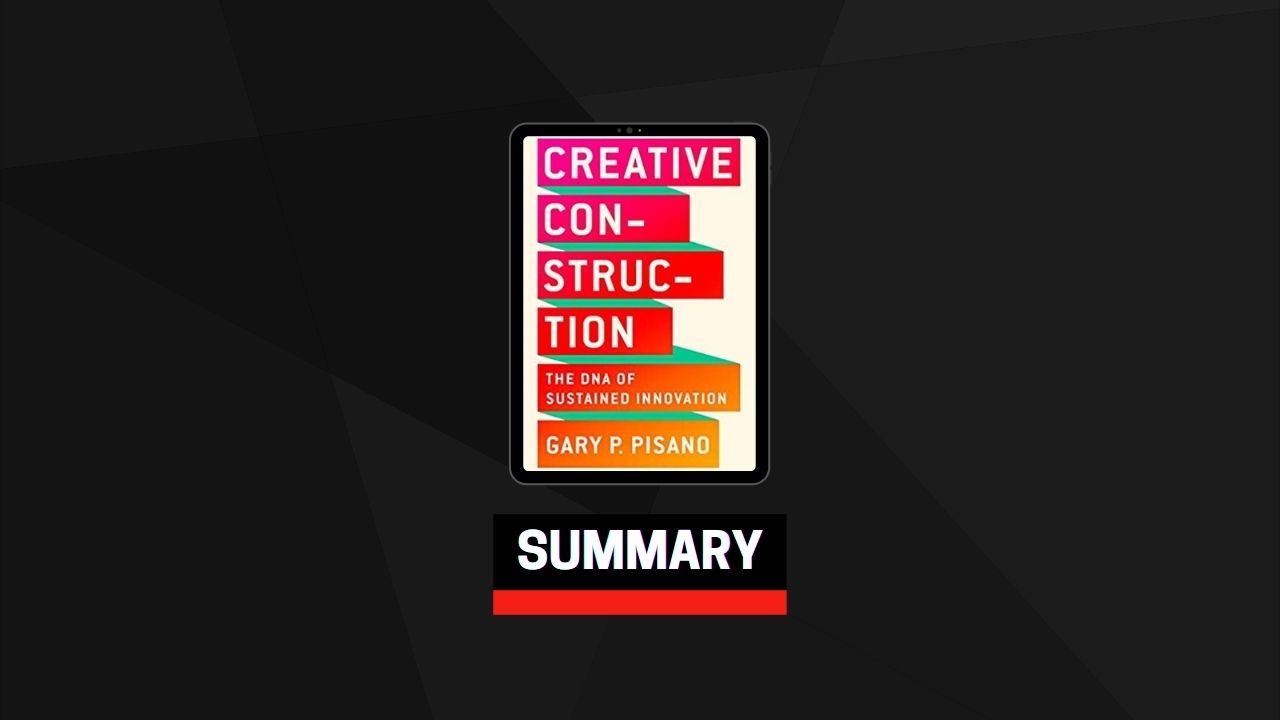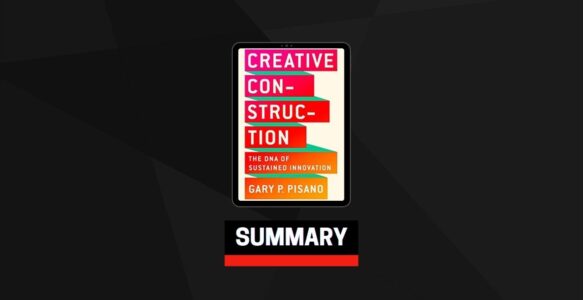WHATEVER HAPPENED TO BLOCKBUSTER?
Competing Through Business Model Innovation
Technology can become obsolete, and so can your business model. Most companies are well aware of the risk of technological obsolescence and take steps like continued investment in R&D to defend themselves against it. Ironically, though, the forces making their business models obsolete are often missed. New competitors may introduce new business models to the market. New technologies may change which kind of resources can be monetized. Customer preferences may change in ways that cause your basis of value creation to decline. Competitive conditions may alter the economics of the way you capture value. An obsolete business model can be just as deadly to corporate health as obsolete technology. Just ask Blockbuster.
How do you keep your business model fresh? Part of the answer lies in an overall strategy that identifies business model innovation as a priority, allocating resources to business model innovation (just as you need to allocate resources to technological innovation). Second, business model innovation also requires the focused efforts of people within the company. That is often missing.
business model innovation like technological innovation requires experimentation and learning. No company would ever think about launching a significant innovation without building and testing prototypes. Experimentation is a natural and inherent part of every R&D organization’s repertoire. But, too often, companies do not apply the same logic to business model innovation. They either refuse to tamper with their model, or they try to introduce business model innovation without experimentation. The former dooms you to business model obsolescence, and the latter is highly risky. It is simply impossible to figure out all the details of business model innovation in advance, no matter how smart you are or how much analysis you do. Netflix’s business model evolved. Initially, the company’s pricing strategy was similar to Blockbuster’s: you paid per video. But, when that didn’t work, Netflix tried a subscription model. Amazon is a master at business model experimentation. Amazon Web Services—today the most successful cloud computing provider—grew out of an experiment to make the company’s application interfaces available to third-party developers.
Business model innovation does not require having all the answers. It requires a capacity to experiment and to learn and a tolerance for risk. In essence, the organizational capabilities and culture required for business model innovation are no different from those required for technological innovation.
IS THE PARTY REALLY OVER?
Why You Should Not Always Eat Your Own Lunch
One of the great puzzles scholars of innovation have grappled with is why companies often fail to respond to disruptive threats. Why are there so many cases like Baldwin Locomotive where senior leaders just do not seem to “see” the future? Scholars and consultants generally ascribe such behavior to inertia. The senior leaders are too wedded to their existing technology or business model, or simply too narrow minded to accept change. Certainly, such leadership failures happen. One reason
thoughtful leaders have trouble with these transitions is that they are framing the alternatives too narrowly. They can either stand pat in their market (and hope for the best) or they can eat their own lunch by embracing the new.
many senior leaders have legitimate concerns with eating their own lunch. Intuitively, they recognize that a commitment to a new technology or new business model is very risky, given uncertainty. They also often realize that eating their own lunch may not be very palatable financially for the firm. But they feel stuck. Because they also know that standing pat on their home turf may ultimately lead to the extinction of the company.
hedging and exploration are essential features of a robust innovation strategy under many circumstances. Too often, innovation leadership is posed as a test of “guts”—are you willing to make the big bets? Such “all-in” bets make for great business headlines, but they are actually pretty foolish if you face high levels of uncertainty. Making smaller bets, experimenting, learning, and adapting are survival-enhancing behaviors in highly uncertain environments.
there are going to be circumstances where you have to transform your organization and innovate outside your home court. You will have to seek disruptive business model innovations, radical technological innovation, or architectural innovations. Having a clear strategy to undertake these kinds of innovations is indeed helpful. But they require different kinds of capabilities than your organization may have been using. To execute your innovation strategy, you need to develop a matching set of innovation capabilities. You need to develop an innovation system.
VENTURING OUTSIDE YOUR HOME COURT
Search: Discovering Novel Problems and Solutions
There is nothing predictable about transformative innovation. Exploring new technological or market landscapes is fraught with uncertainty. This does not mean, though, that transformative innovation is the outcome of random luck. Transformative innovators do not just stumble onto interesting ideas by pure chance. Instead, their senior leaders design and manage their organizations to increase exposure to a broader palette of problems, perspectives, concepts, technologies, and user experiences. Fundamentally, they value diversity of ideas over sheer quantity. They value the learning that comes from exposure to novel ideas more than the predictability that comes from working in familiar spaces.
Broadening your organization’s capacity to search widely cannot be reduced to a few magic practices. Search capacity is rooted in organizational systems composed of interdependent choices of people, processes, and structures. The capacity to search broadly requires a thoughtful combination of people who bring diverse perspective with processes and structures that facilitate exploration and learning.
Large organizations have the resources to hire a broader portfolio of talent. Larger organizations can invest in multidisciplinary capabilities in a way that is simply outside the reach of smaller companies. Larger organizations have the resources to mitigate risks through parallel efforts. They can attract and work with a broader cross-section of external parties.
Finally, while building a capacity for broader search is a necessary step in becoming a transformative innovator, it is, alas, not sufficient. Novel ideas are the raw material for innovation; having a diverse mixture of ideas sets the stage for transformative innovation. But to take that potential and create truly transformative innovations requires a capability to synthesize diverse ideas into coherent concepts.
SYNTHESIS
Bringing the Pieces Together
Synthesis—the melding of ideas from distant sources into coherent innovation concepts—is crucial for transformative innovation. Unfortunately, synthesis does not come naturally to most organizations and is particularly challenging for large enterprises. To manage scale, companies typically divide themselves into ever more isolated compartments. They create market-facing business units or divide their R&D function into specialized subunits. They hire ever more specialized people in particular technologies or in particular markets. They reward people according to goals defined by narrow organizational boundaries (e.g., How many patents did your department file? How much market share did your business unit gain? How much cost did you take out of purchased components?). None of these are, by themselves, inherently bad things to do. But, unfortunately, they impede the kinds of cross-flow of ideas, talent, expertise, and experience that might lead to transformational innovations. What is ironic, of course, is that larger organizations may have more of the pieces for transformational innovation available to them, either within their broad portfolio of businesses or through their external networks. Unfortunately, having the pieces is not enough. They need to be melded.
Transformative innovation through synthesis doesn’t happen through pure luck. It happens where organizations build that capability through a set of interrelated choices about people, processes, and structures. The capability for synthesis is rooted in people who can bridge diverse fields of knowledge and domains of expertise; it is rooted in processes that enable experimentation and learning; and it is rooted in structures that drive, rather than impede, the flow of ideas from diverse sources. All of these are, of course, completely in the hands of management. A company’s ability to do synthesis well is a function not of size but of management.
WHEN TO HOLD ’EM AND WHEN TO FOLD ’EM
Uncertainty, Ambiguity, and the Art and Science of Selecting Projects
Selecting which projects to fund is not like choosing dishes from a restaurant menu where you are presented with a set of well-defined choices. With the exception of some minor modifications that a good restaurant might make to your dish, you are pretty constrained to choose what they offer. Project selection does not work that way. The menu evolves, and you can actually change the dishes pretty substantially. Selection triggers additional search and synthesis. Organizationally, this implies that the common practice of dedicating groups to project selection (e.g., R&D portfolio committees) is flawed because it isolates selection from other innovation activities. The management involved with selection should also be capable of search and synthesis. They are not “selectors”—they need to be innovators.
Innovation—particularly transformative innovation—necessarily involves learning. You never have all the right answers formulated in advance. You search in a complex, incomplete, and evolving landscape of opportunities. You conduct small (inexpensive) experiments where you can. You focus on having a high “learn-to-burn” ratio. Selection itself is a learning process. A learning approach to project selection probably feels a lot “messier” than many of the resource allocation processes you may have experienced. It has some familiar elements (financial analysis, review meetings, etc.), but they are implemented in some unfamiliar ways. Financial analyses become input used to generate additional search and experimentation—they are not the arbiters of which projects are good or bad. Decisions may be postponed until better information is available. Projects can be reshaped. There is debate, criticism, and even conflict. Yet the process is not a free-for-all. It can be structured around specific meetings and specific types of information that are expected to be available at different points in the process. Rules of engagement can be set to ensure that debate is focused on the right issues and undertaken in a way that avoids personal attacks. Senior leaders need to signal their personal willingness to learn from the process.
THE PARADOX OF INNOVATIVE CULTURES
Why It’s Not All Fun and Games
Innovative cultures are rare. Becoming one involves several clear challenges. First of all, innovative cultures are not rooted in one or two practices such as tolerance for failure or willingness to experiment, practices we so often hear about in discussion of “what it takes to be innovative.” Innovative cultures are complex organizational systems. They are composed of an array of practices. Second, innovative cultures are paradoxical. They employ practices that push the organization in seemingly inconsistent directions. This can be confusing for both employees and for leaders who are taught that they are supposed to be consistent in their styles. Yet, as discussed above, the “contradictions” are not contradictions. Innovative cultures require a delicate balance between different values. Getting this balance right is the job of leadership. And, finally, not all of the practices of innovative cultures will make everyone comfortable. Innovative cultures are not always pleasant to work in. They require some strong medicine. They are not for everyone. Before you decide to go down the path of creating an innovative culture in your organization, you need to make sure you understand the realities of such cultures and ask whether you and the organization are willing to take your ice cream with a healthy dose of cod liver oil on top!


